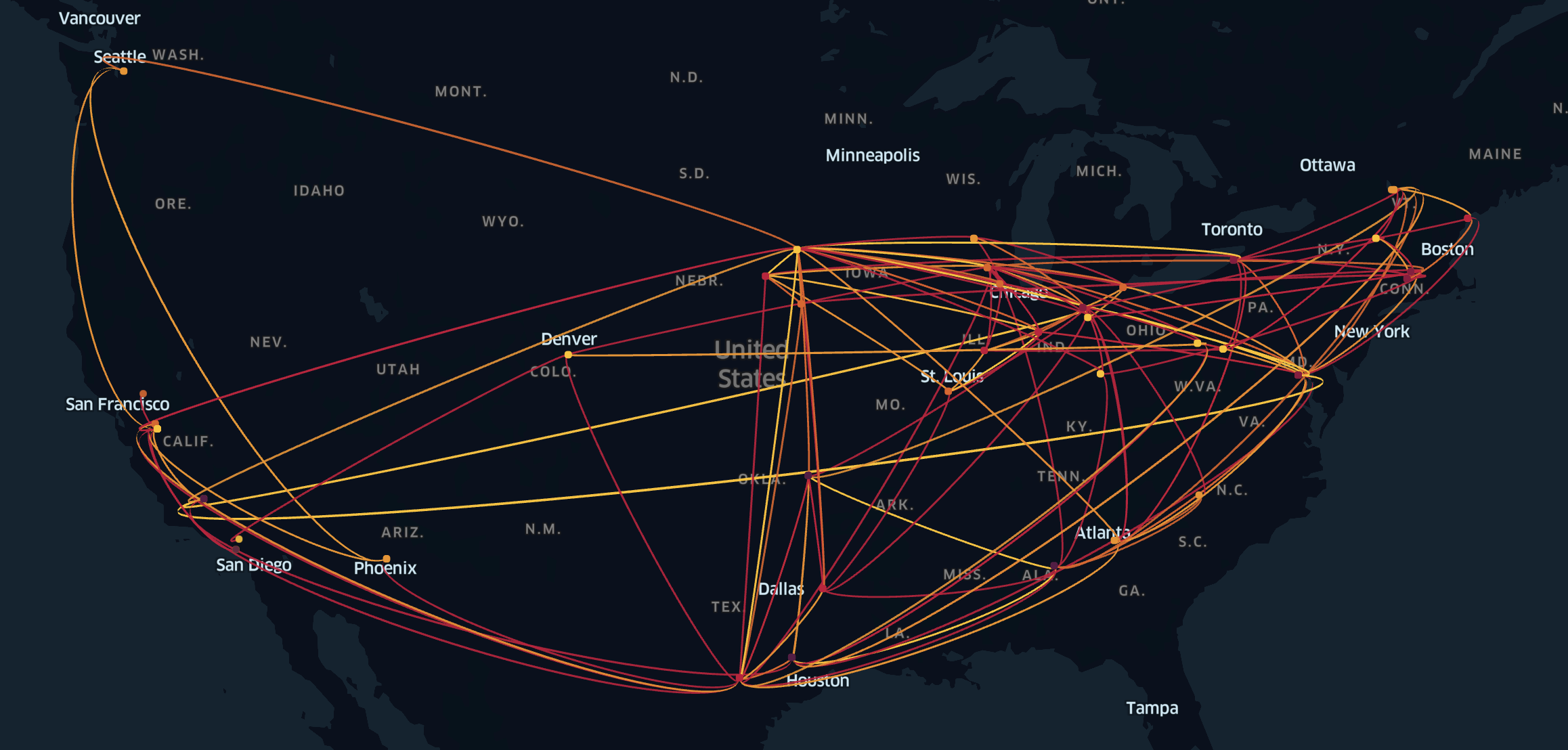Geolocation - Cross-AOI
The Cross-AOI algorithm analyzes device trips between your AOIs over a period of time. This can be used on warehouses to measure trends in different upstream and downstream supply chain relationships, quantify cross-shopping amongst competing shopping malls, compare multi-use parking lot capture, and much more.
Cross-AOI allows users to customize the type of trips they want to measure with various parameters to remove excess data and only include activity relevant to their use case.
Using the Cross-AOI Algorithm
- Draw your AOIs as usual
- Select the Cross-AOI algorithm
- Set a date range for analysis
- (Optional) Tweak the parameters as needed
- Click Run!

Note: image created using kepler.gl from GO Cross-AOI raw data
Data Visualization in GO
Results for the Cross-AOI algorithm are currently only accessible via download or API in raw form (see results downloads) as shown in the Results section. Visualization in the GO user interface is in development and expected later this year.
Parameters
- Data provider: select from available data providers
- Trip time: filter for trips between AOIs that take a certain amount of time (trip time = arrival time at Destination AOI - departure time from Source AOI). You can set both a minimum and maximum trip time
- Trip directions: choose whether to count trips based on the direction of movement (counting A->B separately from B->A) or not. Default is to include directionality
- Indirect trips: choose whether to include indirect trips between AOIs or not. This means that when a device goes from A->B->C, it would be counted as a trip from A->B, B->C, and A->C. Excluding indirect trips (default) would result in A->C not being counted as a trip
- Dwell time: filter for devices that spend a certain amount of time in your AOIs. You can set both a minimum and maximum dwell time

Results

Cross-AOI results are structured as measuring trips between a "Source AOI" and "Destination AOI"
Time Series
Cross-AOI produces several time series results based on different frequencies (daily, weekly, monthly, quarterly, and aggregated). Each of these datasets contain 2 sub-timeseries:
- Trip count (
raw.{frequency}.trip.count): the number of times a trip was made from thesource_aoi_nameto thedest_aoi_namewithin the time period - Device count (
raw.{frequency}.device.count): the number of unique devices that made trips from thesource_aoi_nameto thedest_aoi_namewithin the time period
Each line item in the result is the count of one of these metrics from a Source AOI to a Destination AOI in the given time period.
Metadata
Associated metadata in the results include:
source_aoi_id,source_aoi_name: ID and name of the "source" AOIdest_aoi_id,dest_aoi_name: ID and name of the "destination" AOItimeseries: which metric is being measured (trip count or device count - see above)- Note: in the aggregated (non-timeseries) dataset, these metrics are instead represented as columns
raw_trip_countandraw_device_count
- Note: in the aggregated (non-timeseries) dataset, these metrics are instead represented as columns
measurement_ts: date of measurement period (beginning-of-period date for weekly, monthly and quarterly)measured_count: count of metric identified intimeseries
Updated over 2 years ago